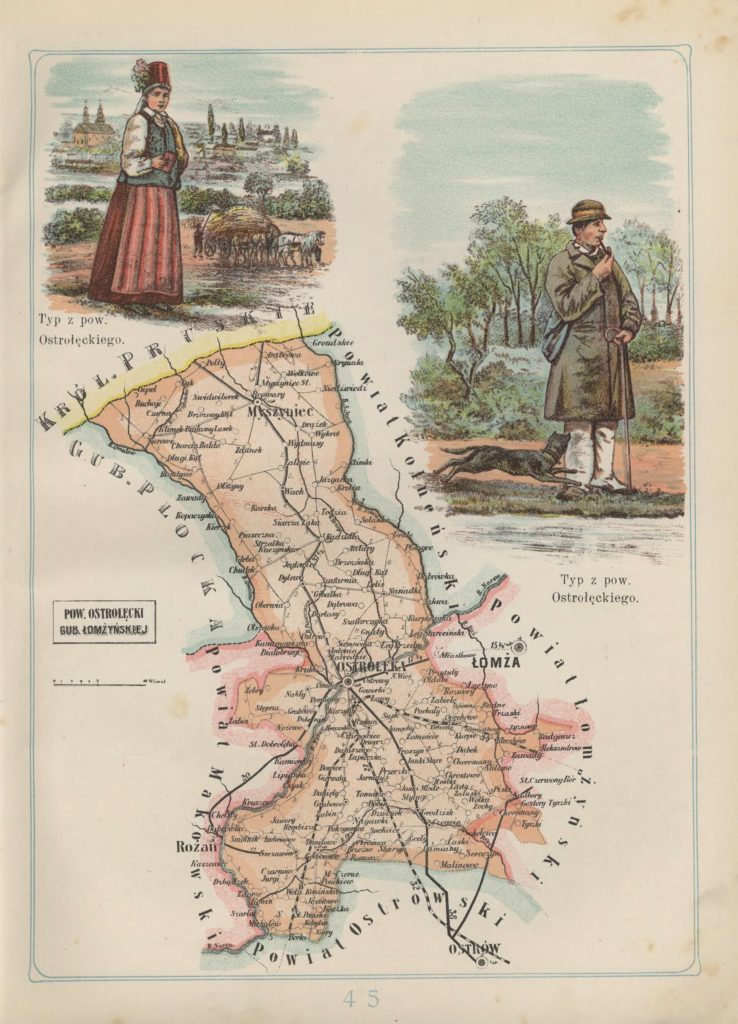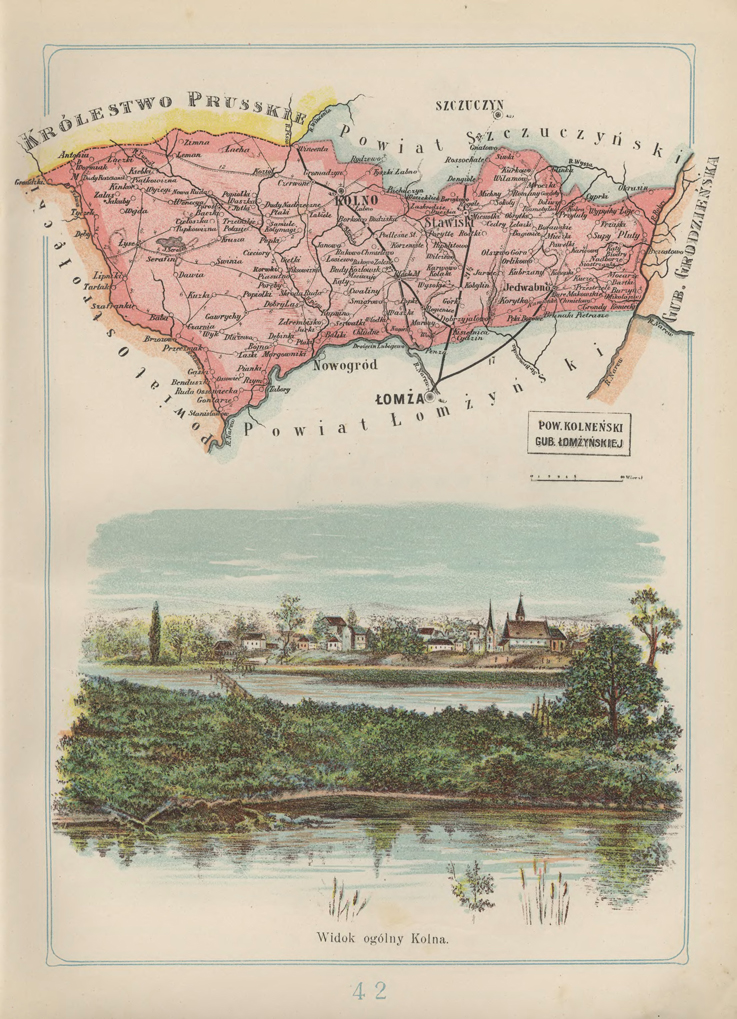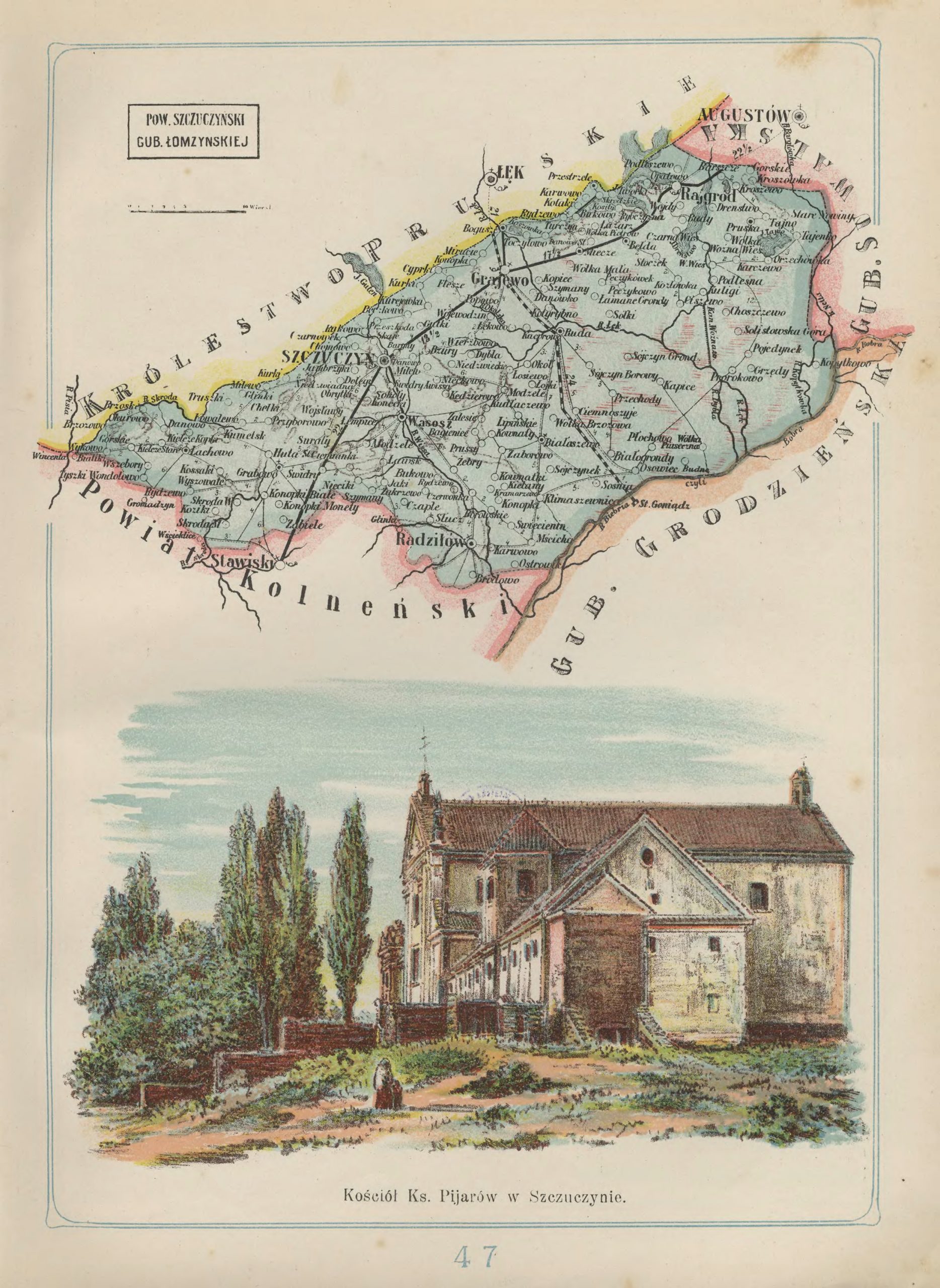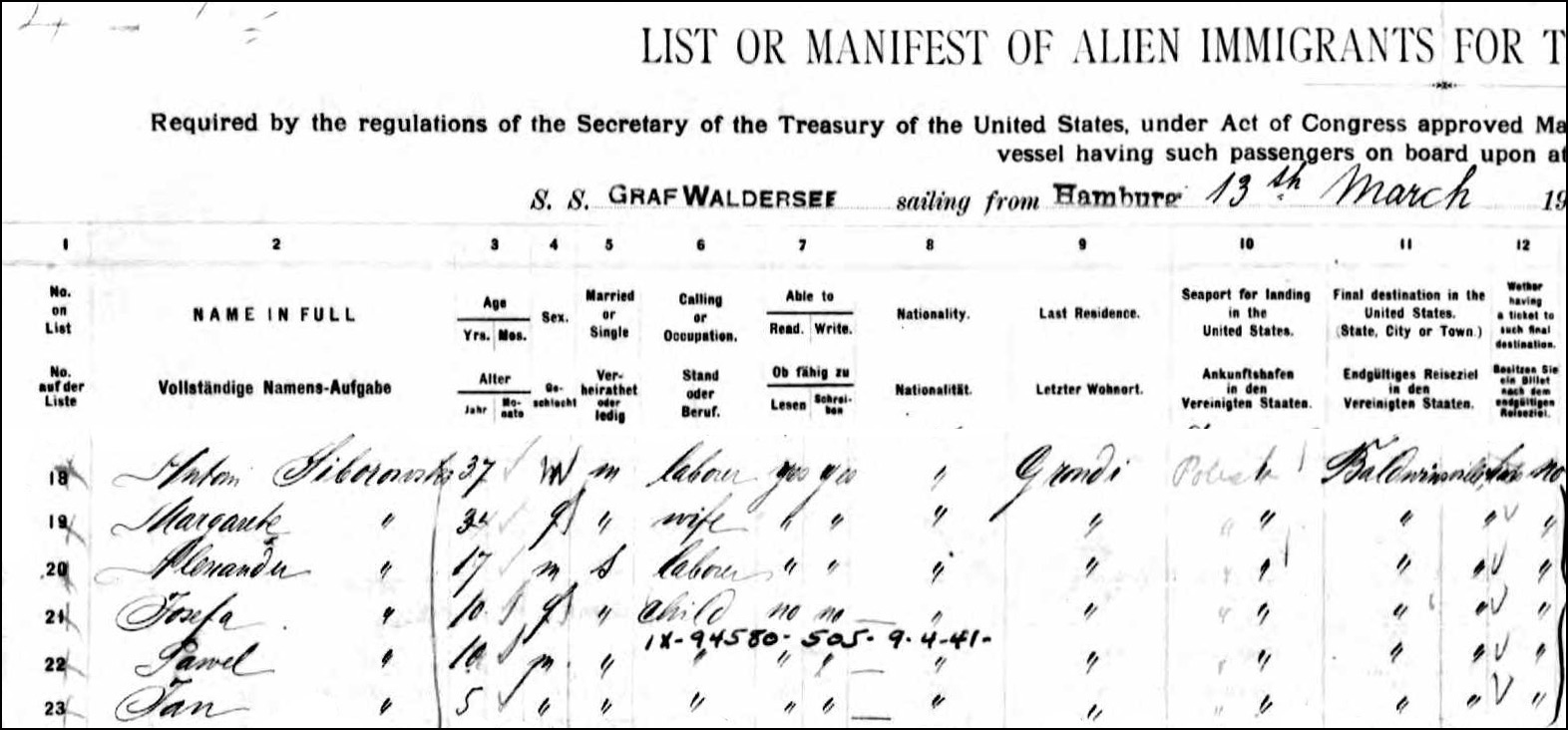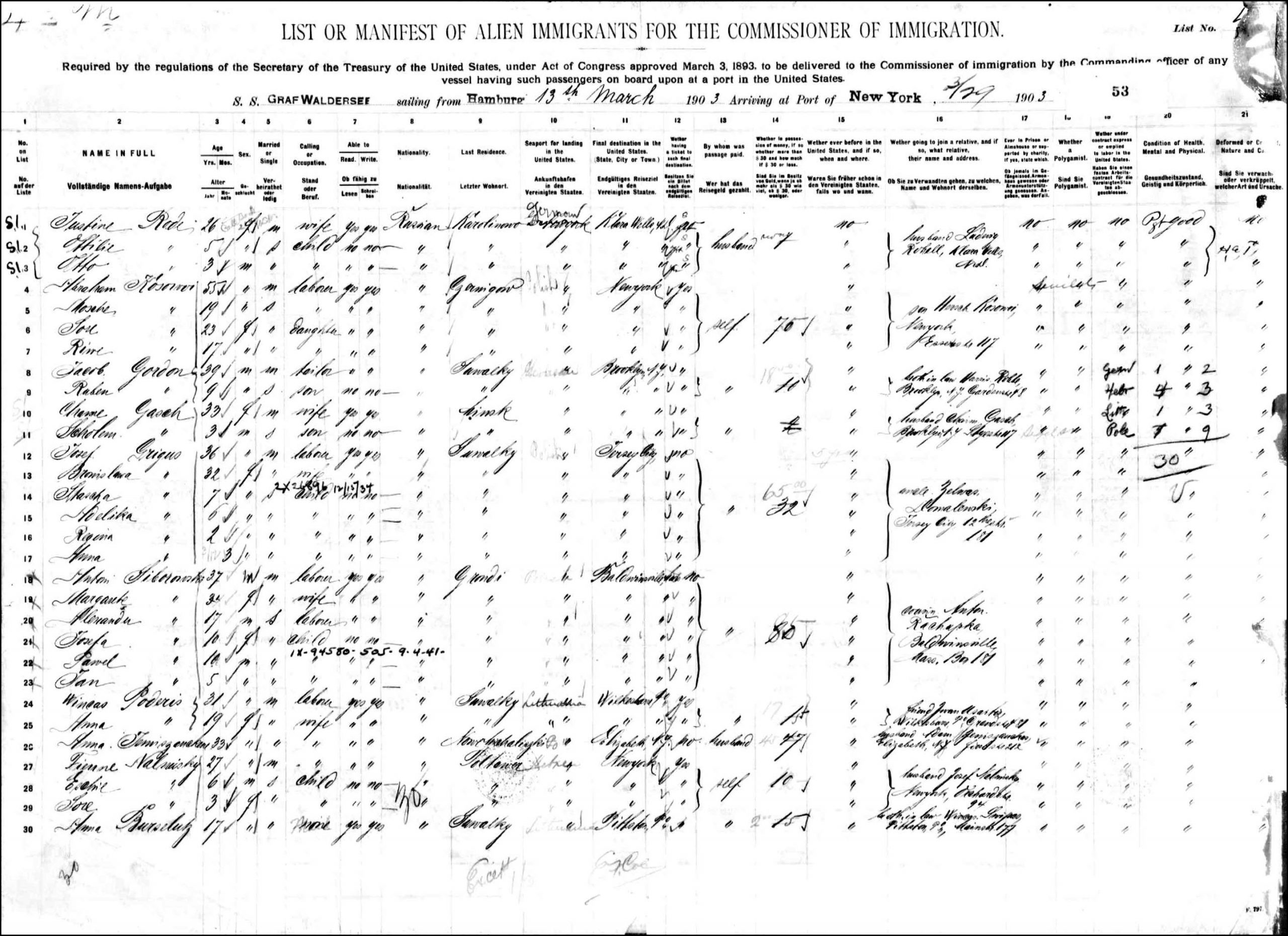The followng parishes were part of the Sandomierz Powiat at the beginning of the 20th Century: Bogoria, Chobrzany, Jankowice, Kleczanów, Klimontów, Koprzywnica, Łoniów, Łukawa, Niekrasów, Obrazów, Olbierzowice, Osiek, Połaniec, Samborzec, Sandomierz, Skotniki, Staszów, Strzegom, Sulisławice, Szczeglice, Wiązownica, Wiśniowa, Włostów, and Zawichost.
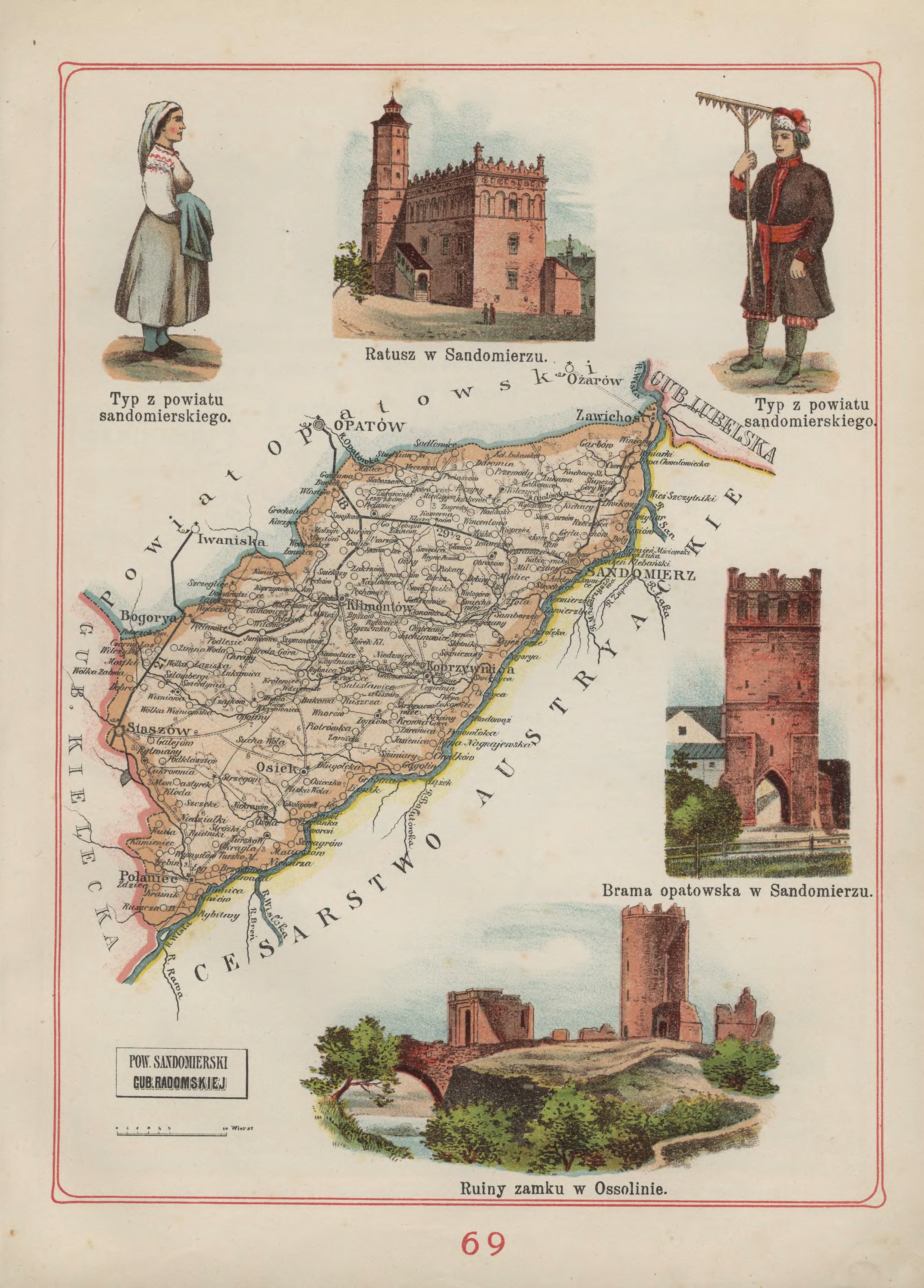
Józef Michał Bazewicz, Atlas geograficzny ilustrowany Królestwa Polskiego (Litografia B. A. Bukaty, Warsaw, 1907); digital images, Mapywig (http://igrek.amzp.pl/details.php?id=11767120 : accessed 10 Sep 2024).
The administrative structure of the parishes of Chobrzany, Jankowice, Kleczanów, Klimontów, Koprzywnica, Łoniów, Łukawa, Obrazów, Olbierzowice, Samborzec, Sandomierz, Skotniki, Sulisławice, and Zawichost can be described as follows:
- 01 Jul 1569-03 Oct 1795: Village, Sandomierz Powiat, Sandomierz Voivodeship, Province of Lesser Poland, Polish-Lithuanian Commonwealth
- 04 Oct 1795-1797: Village, Kreis Sandomierz, Kingdom of Galicia and Lodomeria, Habsburg Monarchy
- 1798-11 Aug 1804: Village, Kreis Opatów, Kingdom of Galicia and Lodomeria, Habsburg Monarchy
- 12 Aug 1804-23 Feb 1810: Village, Kreis Opatów, Kingdom of Galicia and Lodomeria, Austrian Empire
- 24 Feb 1810-09 Jun 1815: Village, Sandomierz Powiat, Radom Department, Duchy of Warsaw
- 09 Jun 1815-15 Jan 1816: Village, Sandomierz Powiat, Radom Department, Congress Kingdom of Poland
- 16 Jan 1816-10 Oct 1842: Village, Sandomierz Obwód, Sandomierz Voivodeship, Congress Kingdom of Poland
- 11 Oct 1842-31 Dec 1844: Village, Sandomierz Powiat, Sandomierz Gubernia, Congress Kingdom of Poland
- 01 Jan 1845-17 Oct 1915: Village, Sandomierz Powiat, Radom Gubernia, Congress Kingdom of Poland
- 18 Oct 1915-10 Nov 1918: Village, Sandomierz Powiat, General Government of Lublin, German Empire
- 11 Nov 1918-31 Aug 1939: Village, Sandomierz Powiat, Kielce Voivodeship, Second Polish Republic
- 01 Sep 1939-27 Jun 1945: Village, Kreishauptmannschaft Opatau, Distrikt Radom, General Government, German Reich
- 28 Jun 1945-21 Jul 1952: Village, Sandomierz Powiat, Kielce Voivodeship, Republic of Poland
- 22 Jul 1952-31 May 1975: Village, Sandomierz Powiat, Kielce Voivodeship, Polish People’s Republic
- 01 Jun 1975-30 Dec 1989: Village, Tarnbrzeg Voivodeship, Polish People’s Republic
- 31 Dec 1989-30 Dec 1998: Village, Tarnobrzeg Voivodeship, Third Polish Republic
- 31 Dec 1998-Present: Village, Sandomierz Powiat, Świętokrzyskie Voivodeship, Third Polish Republic
The administrative structure of the parishes of Bogoria, Niekrasów, Osiek, Połaniec, Staszów, Strzegom, Szczeglice, Wiązownica, and Wiśniowa can be described as follows:
- 01 Jul 1569-03 Oct 1795: Village, Sandomierz Powiat, Sandomierz Voivodeship, Province of Lesser Poland, Polish-Lithuanian Commonwealth
- 04 Oct 1795-1797: Village, Kreis Sandomierz, Kingdom of Galicia and Lodomeria, Habsburg Monarchy
- 1798-11 Aug 1804: Village, Kreis Opatów, Kingdom of Galicia and Lodomeria, Habsburg Monarchy
- 12 Aug 1804-23 Feb 1810: Village, Kreis Opatów, Kingdom of Galicia and Lodomeria, Austrian Empire
- 24 Feb 1810-09 Jun 1815: Village, Sandomierz Powiat, Radom Department, Duchy of Warsaw
- 09 Jun 1815-15 Jan 1816: Village, Sandomierz Powiat, Radom Department, Congress Kingdom of Poland
- 16 Jan 1816-10 Oct 1842: Village, Sandomierz Obwód, Sandomierz Voivodeship, Congress Kingdom of Poland
- 11 Oct 1842-31 Dec 1844: Village, Sandomierz Powiat, Sandomierz Gubernia, Congress Kingdom of Poland
- 01 Jan 1845-17 Oct 1915: Village, Sandomierz Powiat, Radom Gubernia, Congress Kingdom of Poland
- 18 Oct 1915-10 Nov 1918: Village, Sandomierz Powiat, General Government of Lublin, German Empire
- 11 Nov 1918-31 Aug 1939: Village, Sandomierz Powiat, Kielce Voivodeship, Second Polish Republic
- 01 Sep 1939-27 Jun 1945: Village, Kreishauptmannschaft Opatau, Distrikt Radom, General Government, German Reich
- 28 Jun 1945-21 Jul 1952: Village, Sandomierz Powiat, Kielce Voivodeship, Republic of Poland
- 22 Jul 1952-31 May 1975: Village, Sandomierz Powiat, Kielce Voivodeship, Polish People’s Republic
- 01 Jun 1975-30 Dec 1989: Village, Tarnobrzeg Voivodeship, Polish People’s Republic
- 31 Dec 1989-30 Dec 1998: Village, Tarnobrzeg Voivodeship, Third Polish Republic
- 31 Dec 1998-Present: Village, Staszów Powiat, Świętokrzyskie Voivodeship, Third Polish Republic
The administrative structure of the parishes of Włostów can be described as follows:
- 01 Jul 1569-03 Oct 1795: Village, Sandomierz Powiat, Sandomierz Voivodeship, Province of Lesser Poland, Polish-Lithuanian Commonwealth
- 04 Oct 1795-1797: Village, Kreis Sandomierz, Kingdom of Galicia and Lodomeria, Habsburg Monarchy
- 1798-11 Aug 1804: Village, Kreis Opatów, Kingdom of Galicia and Lodomeria, Habsburg Monarchy
- 12 Aug 1804-23 Feb 1810: Village, Kreis Opatów, Kingdom of Galicia and Lodomeria, Austrian Empire
- 24 Feb 1810-09 Jun 1815: Village, Sandomierz Powiat, Radom Department, Duchy of Warsaw
- 09 Jun 1815-15 Jan 1816: Village, Sandomierz Powiat, Radom Department, Congress Kingdom of Poland
- 16 Jan 1816-10 Oct 1842: Village, Sandomierz Obwód, Sandomierz Voivodeship, Congress Kingdom of Poland
- 11 Oct 1842-31 Dec 1844: Village, Sandomierz Powiat, Sandomierz Gubernia, Congress Kingdom of Poland
- 01 Jan 1845-17 Oct 1915: Village, Sandomierz Powiat, Radom Gubernia, Congress Kingdom of Poland
- 18 Oct 1915-10 Nov 1918: Village, Sandomierz Powiat, General Government of Lublin, German Empire
- 11 Nov 1918-31 Aug 1939: Village, Sandomierz Powiat, Kielce Voivodeship, Second Polish Republic
- 01 Sep 1939-27 Jun 1945: Village, Kreishauptmannschaft Opatau, Distrikt Radom, General Government, German Reich
- 28 Jun 1945-21 Jul 1952: Village, Sandomierz Powiat, Kielce Voivodeship, Republic of Poland
- 22 Jul 1952-31 May 1975: Village, Sandomierz Powiat, Kielce Voivodeship, Polish People’s Republic
- 01 Jun 1975-30 Dec 1989: Village, Tarnobrzeg Voivodeship, Polish People’s Republic
- 31 Dec 1989-30 Dec 1998: Village, Tarnobrzeg Voivodeship, Third Polish Republic
- 31 Dec 1998-Present: Village, Opatów Powiat, Świętokrzyskie Voivodeship, Third Polish Republic
Copyright © 2024 by Stephen J. Danko



